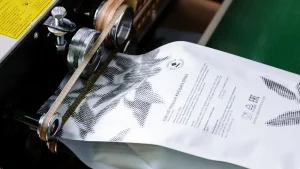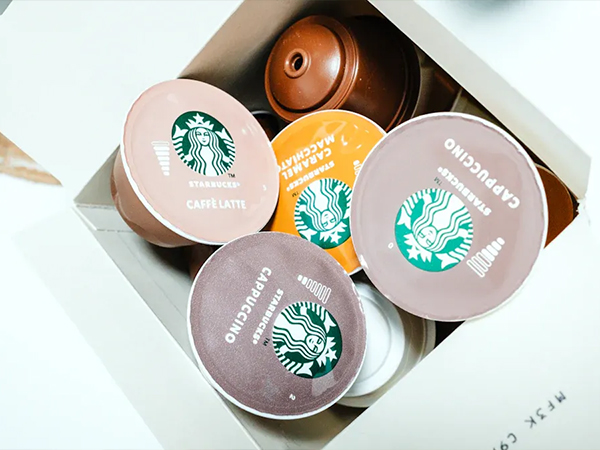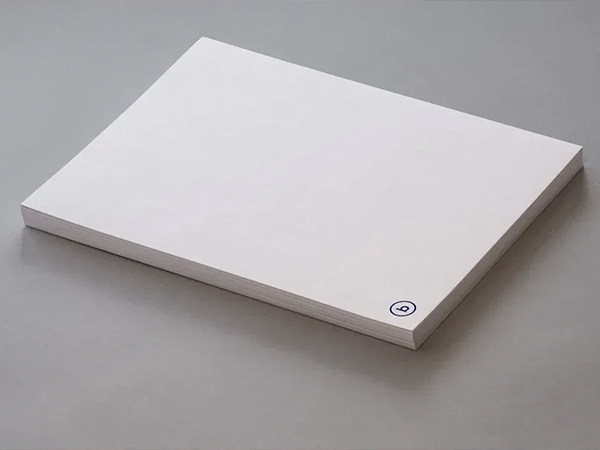
Surface Sizing Agents play a vital role in modern papermaking. They create a protective barrier on paper surfaces, which reduces absorption and enhances water resistance. These agents improve printability by maintaining ink clarity and surface glaze, and they increase the strength and durability of paper. Papermakers choose synthetic and bio-based options for their superior performance and eco-friendly properties. As demand grows in packaging and fine paper, the industry continues to shift toward solutions that deliver quality and support sustainability.
Key Takeaways
- Surface sizing agents improve paper by making it stronger, water-resistant, and better for printing.
- Different types of agents, like starch-based and synthetic polymers, offer unique benefits for various paper uses.
- These agents create a thin film on paper that keeps ink sharp and prevents it from soaking in.
- Using the right surface sizing agent helps paper resist water and stay stable in humid conditions.
- Eco-friendly, biodegradable agents are growing in popularity to support sustainable papermaking.
Surface Sizing Agents
What They Are
Surface Sizing Agents serve as essential additives in papermaking, applied to the surface of paper after sheet formation. Their primary role is to enhance the paper’s surface properties, such as printability, water resistance, and strength. Manufacturers select these agents based on the desired characteristics of the final paper product.
The most common types of surface sizing agents include:
- Starch-based agents: Derived from natural sources, these agents offer cost-effectiveness and partial biodegradability.
- Synthetic polymers: Examples include styrene-acrylate copolymers and polyurethane dispersions, which provide superior water resistance and mechanical strength.
- Cationic starch: Modified starch with positive charges, improving adhesion to negatively charged paper fibers.
- Alum and rosin: Traditional agents, now less common due to environmental concerns.
Note: The global market for surface sizing agents divides into water-resistant and enhancement types. Market reports provide detailed segmentation by type, application, and region, reflecting the diverse needs of the papermaking industry.
Papermakers choose between these agents based on the grade of paper and the required surface properties. For example, corrugated board packaging papers often use styrene-acrylic agents for improved water resistance, while high-grade writing papers may rely on starch-based solutions for printability.
How They Work
Surface Sizing Agents interact with paper fibers at the molecular level through both chemical and physical mechanisms. These agents typically consist of hydrophobic nanoparticles with a core, such as styrene-acrylate, stabilized by starch or synthetic polymers. The stabilizer determines the particle’s charge, which influences how the agent binds to the fiber surface.
During application, the agent forms a thin film on the paper surface. The hydrophilic tail of the molecule binds to the cellulose fibers, while the hydrophobic tail faces outward, creating a barrier that repels water and enhances print quality. This film formation modifies the surface chemistry and physical properties of the paper, improving its performance in printing and packaging applications.
| Aspect | Surface Sizing Agents | Internal Sizing Agents |
|---|---|---|
|
Modified starches, gelatine, acrylic co-polymers (amphiphilic molecules) |
Alkyl ketene dimer (AKD), alkyl succinic anhydride (ASA), rosin (reactive chemicals) |
|
|
Application Stage |
Applied on paper surface after sheet formation |
Added during pulp processing (wet end) |
|
Mechanism |
Form a film on paper surface, hydrophilic tail binds fiber, hydrophobic tail faces outward |
Chemically react with cellulose fibers to form covalent bonds, making fibers hydrophobic |
|
Function |
Improve surface strength, printability, water resistance |
Impart water resistance throughout paper by modifying fiber properties |
|
Chemical Nature |
Hydrocolloids or polymers |
Reactive sizing chemicals |
Surface sizing differs from internal sizing in both application and function. Internal sizing agents, such as AKD and ASA, chemically bond with cellulose fibers during the wet end of papermaking. These agents create a hydrophobic barrier within the fiber network, providing water resistance throughout the sheet. In contrast, surface sizing agents form an external film, focusing on surface properties like printability and surface strength.
Performance varies between starch-based and synthetic polymer agents. Starch-based agents offer biodegradability but may lack water resistance and mechanical strength. Synthetic polymer agents, especially those modified with organosilicon compounds, deliver superior hydrophobicity and durability. However, some synthetic agents raise environmental and cost concerns, prompting ongoing research into more sustainable alternatives.
Papermakers face several technical challenges when applying surface sizing agents:
- Achieving uniform distribution and retention of the agent on the paper surface.
- Controlling penetration and film formation to match paper density and porosity.
- Preventing premature decomposition and bacterial attack on starch solutions.
- Managing process variables such as drying temperature, moisture content, and additive compatibility.
Selecting the right surface sizing agent and application method depends on the paper grade and desired properties. Methods include size press, spray, and calender sizing, each offering different levels of penetration and surface modification.
Print Quality

Ink Holdout
Surface Sizing Agents play a crucial role in controlling how ink interacts with paper. When applied to the paper surface, these agents create a barrier that limits ink penetration. This process, known as ink holdout, ensures that ink remains on the surface rather than soaking into the fibers. As a result, the paper displays more vibrant colors and sharper images.
- Styrene acrylic types of surface sizing agents increase resistance to both water and ink, which helps prevent ink bleed.
- These agents regulate ink absorption, leading to clearer and more defined print images.
- Improved surface strength and smoothness further reduce ink spread, enhancing overall print quality.
- Collectively, these properties optimize paper for high-quality printing by minimizing ink bleed and boosting color vibrancy.
Note: Papermakers often select specific sizing agents based on the intended printing method and desired print performance.
Sharpness and Clarity
High-quality printing demands sharp lines and clear images. Surface sizing agents contribute to this by forming a uniform film on the paper surface. This film smooths out irregularities and fills in microscopic gaps, providing a consistent base for ink application. The result is a printed image with crisp edges and minimal blurring.
Testing the effectiveness of surface sizing agents in print quality involves several methods. The table below outlines common testing categories and their purposes:
| Testing Method Category | Specific Tests/Instruments | Purpose/Parameters Measured |
|---|---|---|
|
Spectroscopic Techniques |
FTIR-ATR, UV-Visible Spectroscopy |
Assess chemical modifications, coating/sizing efficiency, optical properties |
|
Physical Property Testing |
Thickness Gauge, Tensile Strength Tester, Tearing Strength Tester, Stiffness Tester, Ring Crush Tester, Moisture Meter |
Measure paper thickness, strength, stiffness, moisture content |
|
Chemical Property Testing |
Fluorescent Whitening Agent Tester, Formaldehyde Tester, Ink Absorbency Tester |
Evaluate chemical additives, ink absorbency relevant to print quality |
|
Appearance Quality Testing |
Gloss Meter, Dust Content Tester, Smoothness Tester, Brightness Tester |
Measure surface gloss, dust content, smoothness, brightness affecting print quality |
These tests help manufacturers ensure that paper meets the high standards required for professional printing. By optimizing ink holdout and surface smoothness, surface sizing agents enable printers to achieve sharp, clear, and vibrant results.
Moisture Resistance

Water Repellency
Surface Sizing Agents play a critical role in enhancing the water repellency of paper. These agents contain hydrophobic groups that form a protective film on the paper surface. This film acts as a barrier, preventing water molecules from penetrating the fibers. Different agents offer varying levels of water resistance. For example, rosin works well in acidic conditions but may cause yellowing in alkaline environments. Alkyl ketene dimer (AKD) provides flexibility and non-toxicity, making it suitable for both internal and surface applications. Styrene-maleic anhydride (SMA) adapts to a range of paper types, while starch, though eco-friendly, can increase the paper’s tendency to absorb water due to its hydrophilic nature.
The effectiveness of water repellency depends on several factors:
- Cationic starch-particle combinations generally outperform anionic ones in providing water resistance.
- The presence of salts, such as sodium chloride or calcium chloride, can reduce the performance of cationic particles but improve that of anionic particles.
- Higher application and drying temperatures up to the polymer’s glass transition point enhance the efficiency of the sizing film.
- Starch concentration and type influence the balance between film formation and hydrophilicity.
These factors determine how well the paper resists water in real-world conditions.
Dimensional Stability
Moisture resistance directly impacts the dimensional stability of paper. When paper lacks effective surface sizing, it absorbs water quickly. This leads to several failure modes:
- Loss of compression strength, reducing the stacking ability of packaging.
- Deformation of corrugated board structures.
- Weakening of adhesives and potential delamination of layers.
- Increased porosity, allowing rapid water penetration.
- Reduced mechanical integrity and compromised appearance.
Environmental conditions also affect performance. Temperature and salt concentration influence the uniformity and effectiveness of the sizing film. Cationic particles usually provide better moisture resistance, but optimal results depend on the specific environment and paper formulation. By selecting the right Surface Sizing Agents and controlling application conditions, papermakers can ensure that paper products maintain their shape, strength, and appearance even in humid or wet environments.
Durability
Strength
Surface Sizing Agents significantly improve the mechanical strength of paper. When applied, these agents form a continuous film on the surface, which binds the fibers more tightly together. This process increases both tensile and compression strength. As a result, paper products can withstand greater forces during handling, printing, and packaging. For example, packaging materials treated with these agents resist crushing and tearing, which ensures that goods remain protected during transport.
Researchers have explored various natural and synthetic agents to enhance paper durability. A study on soymilk as a surface sizing agent for Xuan paper revealed that the protein in soymilk interacts with paper fibers through hydrogen bonding. This interaction imparts hydrophobicity and boosts mechanical properties. Over time, soymilk-sized paper demonstrates greater resistance to acidification and a slower decline in pH compared to traditional alum–gelatin coatings. However, higher concentrations of soymilk may reduce the overall lifespan of the paper, indicating a balance between immediate strength and long-term durability.
Wear Resistance
Wear resistance is another critical factor in high-quality paper. Surface Sizing Agents create a protective layer that shields the paper from abrasion, folding, and repeated handling. This layer minimizes fiber loss and surface fuzz, which often lead to blurring and reduced print clarity. In archival and fine art papers, wear resistance ensures that documents retain their appearance and legibility over time.
Papermakers often evaluate wear resistance by subjecting samples to repeated folding, rubbing, or exposure to environmental stressors. Papers with effective surface sizing maintain their integrity and resist tearing, even after extensive use. This durability proves essential for books, packaging, and archival materials that require a long service life.
Tip: Selecting the right concentration and type of surface sizing agent can optimize both strength and wear resistance, ensuring that paper products meet demanding performance standards.
Environmental Impact
Eco-Friendly Options
Starch-based surface sizing agents have become increasingly popular in the papermaking industry. Their appeal comes from their biodegradability, low toxicity, and renewable nature. Many companies now choose these agents to reduce their environmental footprint and meet stricter regulations. Starch-based agents generally produce lower carbon dioxide emissions than synthetic alternatives, which helps decrease the overall carbon footprint of paper production. However, the environmental benefits of starch-based agents depend on how well the agricultural impacts, such as fertilizer and pesticide use, are managed. While these agents align with circular economy principles, challenges like higher production costs and raw material variability remain. Despite these hurdles, ongoing innovation and supportive regulations continue to expand their use, making them a preferred choice for sustainable papermaking.
Sustainable Practices
Manufacturers have adopted several sustainable practices to improve the environmental profile of surface sizing agents. Enzymatic modification of starch, using enzymes like α-amylase and β-amylase, reduces viscosity and enhances performance. This method offers a safer and more eco-friendly alternative to chemical modification, especially for applications that require food-contact safety. Companies also invest in PFAS-free additives, develop agents for recycled materials, and use advanced monitoring systems to optimize chemical use and minimize waste.
Regulatory agencies such as the EPA and ECHA enforce strict guidelines on chemical use, pushing the industry toward bio-based and eco-friendly solutions. Consumer demand for biodegradable packaging further accelerates this shift.
| Aspect | Impact on Sustainability and Market Trends |
|---|---|
|
Regulatory Influence |
VOC emission limits and chemical safety standards drive adoption of water-based and bio-based agents. |
|
Consumer Demand |
Bans on plastics and preference for paper-based packaging increase demand for eco-friendly sizing agents. |
|
Industry Innovation |
Investment in bio-based starch refining and technology upgrades supports sustainable product development. |
|
Recyclability |
Agents like polyvinyl alcohol enhance fiber recovery, while others require careful management in recycling. |
Future trends point to continued growth in eco-friendly surface sizing agents. Companies focus on natural resin-based and starch-based agents, digital technologies for efficiency, and collaboration across the value chain to meet regulatory and market demands. These efforts ensure that surface sizing agents will remain central to sustainable papermaking.
Surface Sizing Agents deliver essential benefits for high-quality paper. They enhance surface strength, printability, and liquid resistance while reducing water absorption and supporting efficient production.
- Recent advancements include water-based and bio-based agents that align with sustainability goals.
- Manufacturers now focus on innovative, biodegradable solutions that improve adhesion, film strength, and environmental responsibility.
- Ongoing research and market growth, especially in Asia-Pacific, ensure that these agents remain vital for premium and sustainable paper products.
FAQ
What is the main difference between surface and internal sizing agents?
Surface sizing agents coat the paper after sheet formation. Internal sizing agents mix with pulp before sheet formation. Surface sizing mainly improves printability and water resistance at the surface. Internal sizing provides water resistance throughout the paper.
Can surface sizing agents affect recyclability?
Most modern surface sizing agents, especially starch-based types, support recycling. Synthetic agents may require special handling. Papermakers often select agents that balance performance with recyclability.
Are surface sizing agents safe for food packaging?
Many surface sizing agents, such as modified starches and certain synthetic polymers, meet food safety standards. Manufacturers must verify compliance with regulations like FDA or EU guidelines before using them in food-contact applications.
How do papermakers choose the right surface sizing agent?
Papermakers consider paper grade, end-use, print method, and environmental requirements. They test agents for print quality, water resistance, and strength. Cost and sustainability also influence the final choice.






